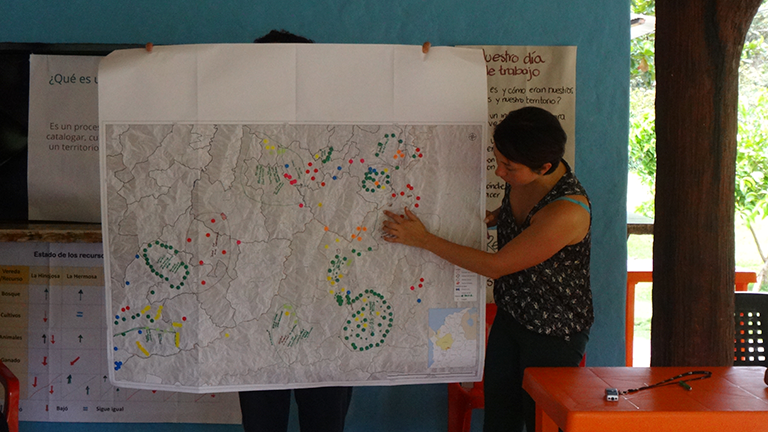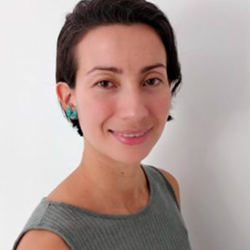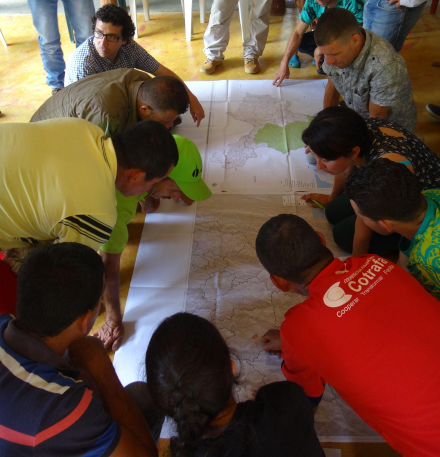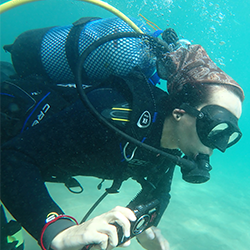Karen Soacha is a researcher at ICM-CSIC and part of the coordination team of Cos4Cloud; she also participates in the PANELFIT project. She studied an environmental engineer degree in Colombia, although she has always been passionate about biology. Her journey in sustainable development and environmental information systems started at the Colombian Ministry of Environment and, later on, two research institutes IDEAM and Humbodlt Institute. In particular, she worked at the Colombian Biodiversity Information System: SiB Colombia, coordinated by the same Institute.

Currently, she is doing a PhD in Information and Knowledge Society. Her research focused on citizen science and governance. In Cos4Cloud, she coordinates the tasks related to putting into practice the Cos4Cloud services.
You have a pretty multidisciplinary profile. How did you end up working on citizen science projects?
The ‘story’ began when I worked at SiB Colombia, a system that facilitates the publication of open biodiversity data by a wide range of organisations in Colombia, from inventories to biological collections.

I came to realise how citizen science has been a valuable initiative to generate biodiversity data. Then, I started to facilitate the connection of citizen science platforms,such as Naturalista Colombia and eBird Colombia, with SiB Colombia, especially to think about how citizen science projects can influence policies. That was the topic of my master’s degree dissertation!
Photo: Karen Soacha, ICM-CSIC & Cos4Cloud.
Is there any specific project you participated in, in which you ‘fell in love ‘with citizen science?
Yes! For example, we created a project that consisted of a participatory inventory of biodiversity in strategic areas for compensation of carbon emissions called ‘Participatory inventories BanCO2’ with the local communities. We co-designed the project and together collected biodiversity observations, including the use of camera traps. The information was uploaded to the citizen science platform Naturalista.

It was exciting to experience how they were engaged in the project and also to learn from them. I realised then that citizen science is a significant opportunity to create bridges between actors who aren’t usually connected: agencies, academics and communities.
That is an impressive story. You are currently doing a PhD focused on citizen science and governance in the EMBIMOS group at the ICM-CSIC; however, can you specify what governance means in the citizen science context?
I think it is vital to have a holistic vision when working on citizen science. In this context, ‘governance’ contributes to understanding the decision-making processes and due citizen science is a collective and participatory effort with a wide range of actors; governance is a relevant topic. That is why I focused my research on it.
For example, in the case of citizen science governance, we have to ask ourselves: what are the interests and voices to be balanced and heard in the project, who determines what observations or data to share or not share, who decides about data management, protocols, etc., are the citizens, the researchers, the developers? I will work on these questions.
Currently, I am focusing on describing what a citizen observatory is from multiple perspectives, their characteristics and their role within the field of citizen science. Also, to study the knowledge cycle in the citizen observatory, from its creation to the data exchange and how technology facilitates it.
In this changing world, from your perspective, what are the citizen science challenges and opportunities?
One of the biggest challenges is influencing decision-making processes, especially in citizen science projects that monitor biodiversity and the environment. Usually, the users that contribute to generate data expect us to do something with this knowledge. For example, CanAirIO collects air quality measurements in polluted cities. Its users probably want to use this data to demand policy changes to live in a healthier city.
But how do we connect the project results to changes in local management? Integrating the data in the official repositories is a big step; some of them, such as the Global Biodiversity Information Facility (GBIF) and SiB Colombia, are working on it; however, most systems don’t do it. Why? Because they don’t consider citizen science a trustworthy source to generate information. So, we must work towards data standardisation and quality and ensure that all the information generated is openly available to address this issue. But, I am optimistic. I think we are getting closer and closer; for example, some scientific articles have recognised that citizen science data is relevant to monitor SDGs!

Another big challenge is to rethink how we want to build the citizen science communities, which ideally should include researchers, citizens and decision-makers. However, most citizen science associations are formed by researchers, and you find practically no citizens, maybe because they don’t have access to technology or experience language barriers. To address it, I believe that we need to create conversation spaces to give them a voice.
Photo: Karen Soacha, ICM-CSIC & Cos4Cloud.
Sustainability is another critical challenge: we need to move from projects to processes. We, the academics, force ourselves to think in the short term because the scientific funding and projects last only a few years, but citizen science is a long-term process. You can’t just finish a project and leave the community.
How can Cos4Cloud contribute to addressing some of these challenges?
Cos4Cloud is a project that addresses some real citizen science challenges, which is the lack of technological capacity of some projects, which don’t have enough funding or time to develop apps with cutting-edge technologies. We are developing 11 services that will be openly available so that any citizen science platform can choose what services they want to integrate without a significant investment of money.
However, we are aware that technology is changing continuously, so, in the end, Cos4Cloud’s legacy will be its standpoint: to think of solutions to address the common citizen science challenges and share them openly.
Cos4Cloud will integrate the developed services in the new European Open Science Cloud (EOSC); why do you think this is important?
Thanks to the EOSC, Cos4Cloud’s services will be part of a community of digital infrastructures aimed at the scientific community and consolidate citizen science there. Also, it will help us to make our services visible and accessible.
The Cos4Cloud services are under development, but which are the next steps?
Some of our developers already have a prototype version of the service.
Now we’re designing real scenarios to test them and answer the questions: is it useful? Is it easy to use? Does it address the needs of the citizen observatories?
We need a community involved in this testing so we can improve the services. These services have been co-design since the beginning, and now, in the final lap, we need the citizen science community to be actively involved too.

















